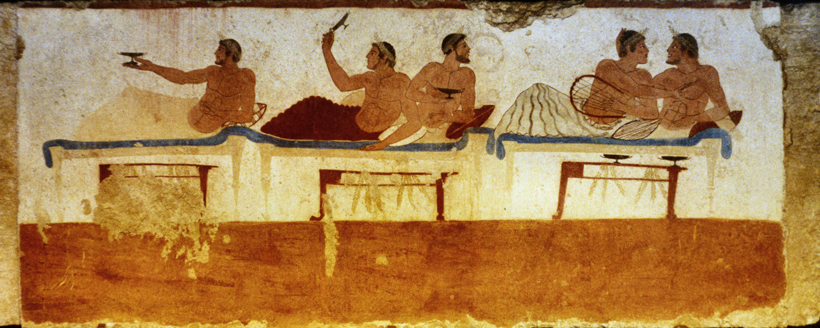Gatherings of scientific minds are as old as science itself. The ancient Greeks were famous for organizing symposia (from the Old Greek for “drinking together”)—attendees followed a strict academic program that consisted of dining, drinking, and discussing a particular topic. A classic example holds that Plato and acquaintances gathered together one day to discuss the origin, nature, and purpose of love.
As the participants were educated on a great variety of topics and brought expertise from many different fields (a legal expert, a comic play writer, a physician, and, of course, the ever-present Socrates), it was quite the multidisciplinary party. Each attendee gave an oral presentation, sharing his scientific vision on the topic. Because they all approached the subject from different perspectives, the group believed they came closer to unraveling the mystery of love and thus closer to discovering the truth about love. Their conclusion: the ultimate goal of love is the love for wisdom. Therefore, to experience true love, one must dedicate oneself to becoming a philosopher (or, in a more modern interpretation, a scientist).
As scientists, there are two main things we can learn from these Greek chaps. First, pursuing a scientific career is equal to pursuing true love. Second, Plato et al. knew how to organize an effective scientific conference.
Taking a lesson from Plato’s symposia, a group of hydrology students—Sheila Saia, Frank Sedlar, Evan Kipnis, Wouter Berghuijs, and me—came together to organize the American Geophysical Union’s (AGU) first Student and Early Career Scientist Conference, held 14 December 2014. With the support of AGU staff and the Hydrology section leadership, the students exchanged ideas and created an outline for the day.
The result: 100 young scientists gathered to meet peers, participated in workshops to improve their academic skills, and laid the foundations for lifelong academic friendships. Loosely modeled after the ancient symposia, the program consisted of both social activities and scientific sessions. The conference is likely to be the model for an annual AGU Fall Meeting event.
The success of the conference demonstrates how important it is for us as students to continue to shape scientific meetings and contribute to the Fall Meeting program. After all, we will be the ones attending in the decades to come. Students are encouraged to contact their section’s student representatives (or become one!) to propose and help organize new events and programs for students and early career scientists.
We’re millennia removed from lounging on couches and covering ourselves in ivy and flowers while we drink in excess and wax philosophical, but a healthy mix of social and scientific engagement will contribute to achieving the ultimate goal of a conference: to connect, share, unravel the truth, and find true—albeit scientific—love.
—Tim van Emmerik, Hydrology Student Representative, Ph.D. student at Delft University of Technology, Netherlands; email: [email protected]
Citation: van Emmerik, T. (2015), Fall Meeting’s first student and early career conference, Eos, 96, doi:10.1029/2015EO024053. Published on 13 February 2015.
AGU Thanks Fall Meeting Sponsors
Text © 2015. The authors. CC BY-NC 3.0
Except where otherwise noted, images are subject to copyright. Any reuse without express permission from the copyright owner is prohibited.

